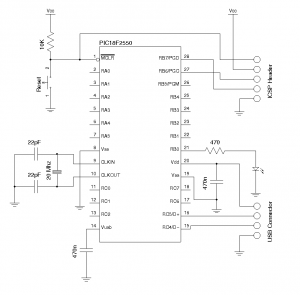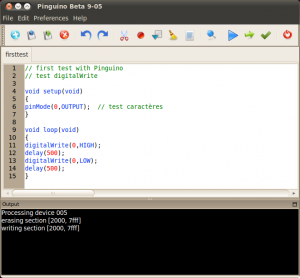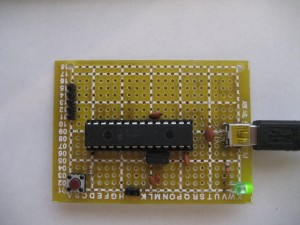As I mentioned a few weeks ago, I was in the process of building tools necessary to bootstrap the hardware needed for PIC development. So far, I have built a simple parallel port programmer and have used it to flash the firmware for the USBPICProg programmer I built later on.
After I have the in-circuit programmer (USBPICProg) in place, I decided to build a Pinguino. According to the project website:
Pinguino is an Arduino-like board based on a PIC Microcontroller.
So it seems to be a good PIC project to start with especially since I have already built many projects with Arduino.
Pinguino is actually very easy to build. In fact, building a Pinguino is not much different than building any other kind of MCU based projects. And it is arguably even easier than building an Arduino since PIC18F2550 has USB support out of the box.
The schematic I used to build the MCU board is shown below:

Compared to the reference design, the main difference is the inclusion of the ICSP header for the firmware programming. I have also omitted the protection resistors to keep the overall circuit simple.
The latest bootloader for Pinguino can be found at here. I used the USBPICProg PIC programmer I built earlier and flashed the PIC18F2550 with the Pinguino bootloader (V2.12)
To test the Pinguino board, I compiled the “blink” example with the Pinguino IDE and loaded it.

And it worked! With the tools I built, I should be able to work with many different PIC MCUs from now on.


